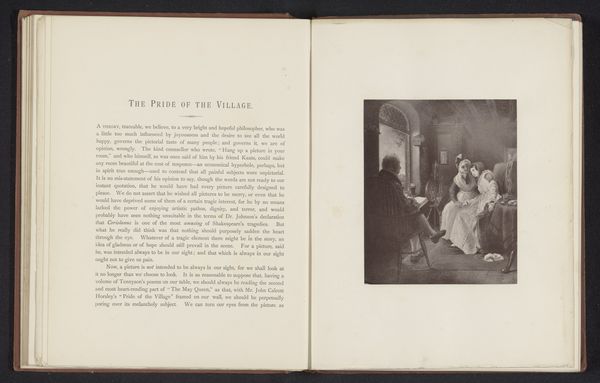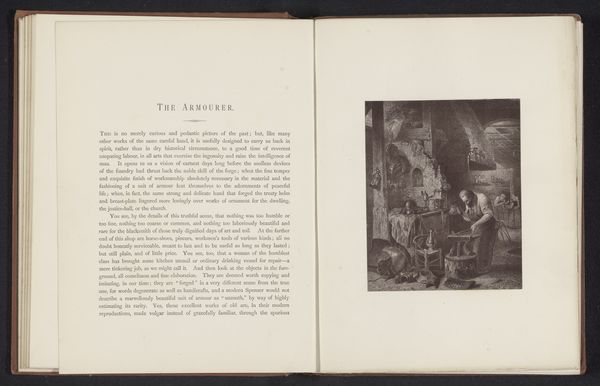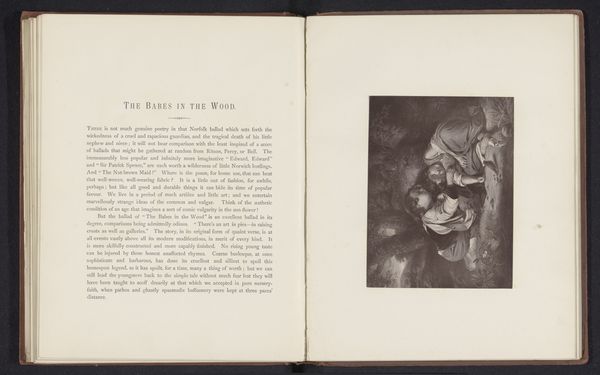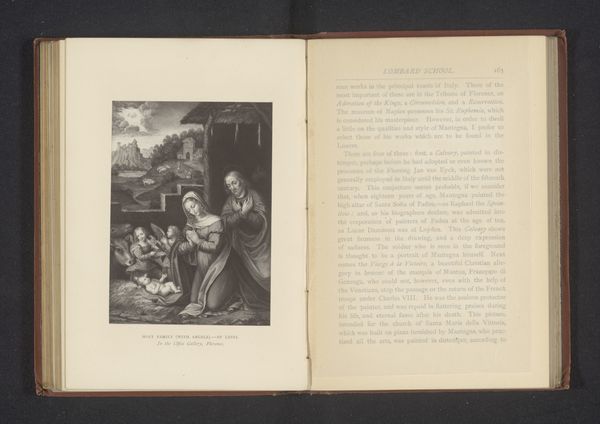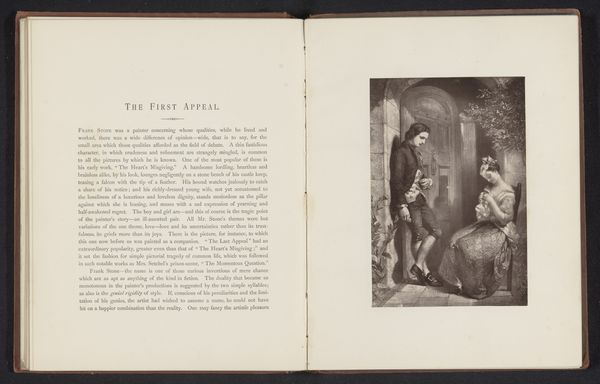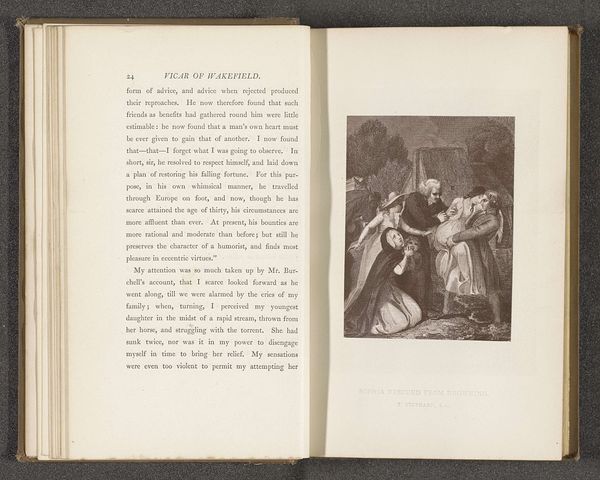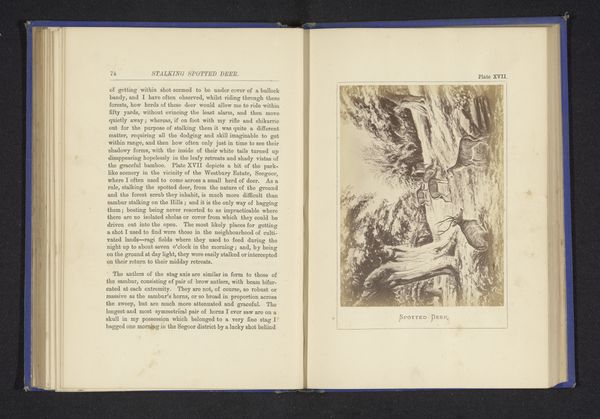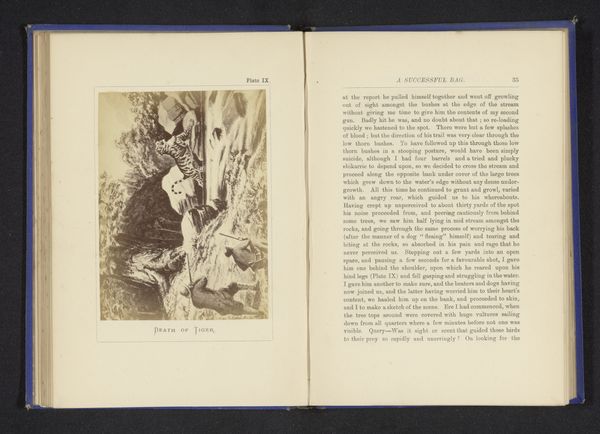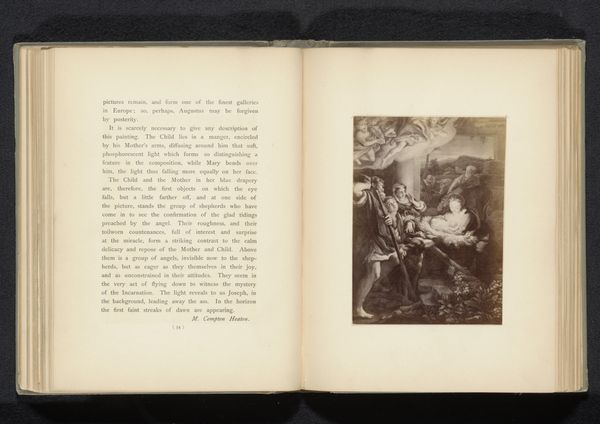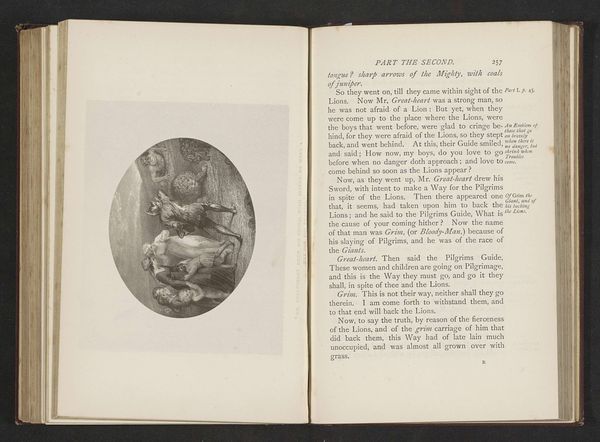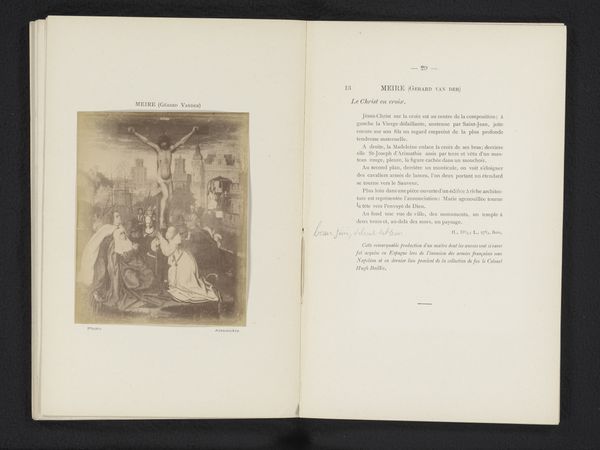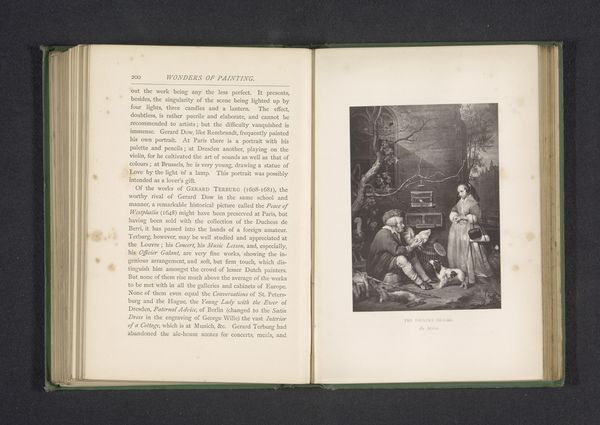
Fotoreproductie van een prent naar een schilderij, voorstellende een echtpaar loopt een kerk binnen before 1871
0:00
0:00
Dimensions: height 156 mm, width 119 mm
Copyright: Rijks Museum: Open Domain
Editor: Here we have a photo reproduction of a print made before 1871, titled 'Fotoreproductie van een prent naar een schilderij, voorstellende een echtpaar loopt een kerk binnen,’ or 'Photoreproduction of a print after a painting, depicting a couple walking into a church’. The high contrast immediately caught my eye. What stylistic elements stand out to you? Curator: What I observe is a structured arrangement that draws attention to the threshold. Note the way the artist uses light and shadow to frame the figures. This formal element emphasizes the architectural divide—how does it modify your interpretation? Editor: I see it now! The bright figures contrast so starkly with the dark foreground and create depth and draw us toward them. How does the setting alter your perception? Curator: The architecture is functional. Note how the converging lines direct the gaze. The setting transforms it into a narrative device. Now, let’s look at the tonal variation. Notice the gradients, the shifts from light to dark, what effect does this accomplish for you? Editor: Well, there are gradients that create highlights on the main figures and they help them stand out but are any details, perhaps in the texture or composition, of significance to the setting? Curator: Absolutely! Notice the geometric rigor: rectangular shapes juxtaposed with archways and with rounded hats, emphasizing a compositional balance. How might this speak to the meaning? Editor: The couple seems to be balanced between these shapes. With the light around them I see them more clearly now. So would you say that the artist is interested in drawing attention to both human structure and architectural detail? Curator: Precisely, the artist appears primarily occupied with these inherent structures, arranging shapes and lines to achieve balance and direct visual attention. The setting is almost like a stage. It is less about narrative detail, more about pictorial syntax. Editor: I hadn't considered looking at it from that point of view. That adds another dimension to it!
Comments
No comments
Be the first to comment and join the conversation on the ultimate creative platform.
